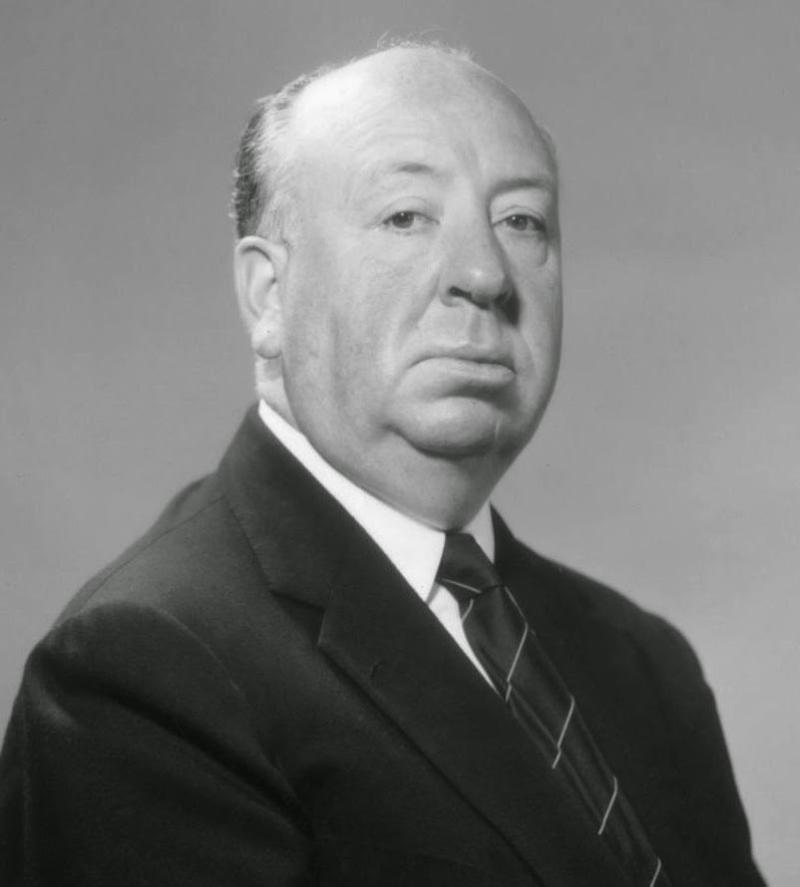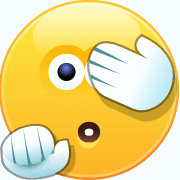'The Twelve Lives of Alfred Hitchcock' Review: Dial M for Multiple
By: Farran Smith Nehme (WSJ)



The legendary cinematographer Jack Cardiff shot a film for Alfred Hitchcock just once: 1949's "Under Capricorn," a resounding flop at the time but a strikingly beautiful movie all the same. It was made in costly Technicolor and shot in long takes that required pinpoint precision from the actors and crew. Cardiff recalled that Hitchcock, who even then was famed for claiming he had finished his films in his head before stepping onto a set, kept his back to the action on every take. "It's tempting to believe," writes Edward White, "that on Hitchcock's set the act of directing—of being Alfred Hitchcock—was itself part of the spectacle."
The many ways of being the world's most famous film director are what Mr. White attempts to pin down in "The Twelve Lives of Alfred Hitchcock." Among filmmakers, Hitchcock's level of celebrity has never been equaled. At his zenith, not only did his name appear above his films' titles, but his image and voice dominated every ad. By the late 1950s and early '60s, as movies like "North by Northwest" and "Psycho" were box-office hits, the man himself could be caught on TV screens introducing "Alfred Hitchcock Presents." "People swarmed out of nowhere to see him," said Hitchcock's daughter Pat.
And it seemed that a large percentage of those people wanted to interview or write about Hitchcock, to sit at the master's feet and hear about storyboards, camera angles and which scene involved which quirky Hitchcock view of psychology. Hitchcock was happy to accommodate them, and felt no great obligation to consistency.
Faced with the resulting wall of anecdotes, legends and plain old lies, Mr. White has tossed aside the life-story or film-by-film approach. Instead his chapters focus on different aspects of Hitchcock, some well-trod ("The Murderer," "The Auteur," "The Womanizer"), others somewhat underexplored at the moment ("The Family Man," "The Londoner"). This essay method lets Mr. White zip back and forth through the filmography to make his points, from near-forgotten early works like "The Farmer's Wife" to masterpieces like "Vertigo."
Though the book avoids straight chronology, it's bracketed by "The Boy Who Couldn't Grow Up," covering Hitchcock's childhood and how it shaped him, and "The Man of God," which uses the director's Catholicism to cover his last years and final illness. Alfred Hitchcock was born in a suburb east of London in 1899, the youngest of three children of William Hitchcock, a greengrocer, and Emma, a Catholic who had insisted her husband convert. Hitchcock's father died in 1914, just as World War I began, and Hitchcock lived through the war's terrifying zeppelin raids in London. He claimed that neither the war nor his father's death had much of an effect, but Mr. White carefully demolishes that, describing, for example, how a comic scene of a woman's hastily getting dressed in "Murder!" echoes the day young Hitchcock found his terrified mother in a similar state as bombs fell nearby.
“The Fat Man” also circles back to Hitchcock’s childhood, a lonely one unmarked by friendships, to trace the source of his fraught relationship to his own body. “Not one friend or colleague believed he had ever been anything other than profoundly unhappy about his appearance since childhood,” says Mr. White. He details Hitchcock’s lavish dinner parties and stringent diets, showing how the director’s jokes about his weight betrayed his sensitivity. Written with warmth and no trace of condescension, it’s one of the best chapters in the book.
Less effective, due not so much to Mr. White as to the thorniness of the topic and reams of coverage elsewhere, is the chapter called “The Womanizer”—a deliberately odd title, given that Hitchcock told many colleagues that, as Mr. White puts it, “he had lived much of his life in a state of impotent celibacy.” Whether or not the relationship was sexually active after the birth of their daughter Patricia, Hitchcock’s marriage to Alma Reville was also one of the most important professional collaborations of his life. Other women vital to his filmography included screenwriter Joan Harrison and his longtime assistant Peggy Robertson. Hitchcock had good working relationships with Ingrid Bergman (his favorite actress), Grace Kelly and Kim Novak, who at times was curtly treated by the director but remembers him fondly. But there were years of public accounts of Hitchcock’s mistreatment of Tippi Hedren, a model who was spotted by Alma and signed to a five-year contract by Hitchcock. His attempt to mold Ms. Hedren into a star devolved into a pattern of abuse during the filming of “The Birds” and eventually an alleged assault around the time of “Marnie.” Mr. White also grapples with Hitchcock’s ugly behavior toward actresses like Vera Miles, Brigitte Auber and Madeleine Carroll.
The hoariest Hitchcock anecdotes are approached with a healthy dose of skepticism. Michael Redgrave, the male lead of “The Lady Vanishes,” swore the famous “actors are cattle” remark was made in his presence, though no one else seemed to hear it; and there are multiple versions of the story of Hitchcock’s being briefly locked in a jail cell as a boy. More interesting to Mr. White is the way Hitchcock used these stories. He notes, in the chapter “The Entertainer,” that the cattle remark became a staple interview question, never met with irritability. It was, along with the weight, the schoolboy pranks and the blondes, part of the image.
Mr. White’s previous book was a biography of writer and photographer Carl Van Vechten, and he clearly regards Hitchcock as an artist in the company of any number of 20th-century greats. He takes a middle road in his estimation of his subject as a person, more empathetic than biographer Donald Spoto or critic David Thomson, less reverent than François Truffaut or Peter Bogdanovich. The book presents Hitchcock’s best and worst behavior, and there is a good deal of both: the tender grandpa helping his granddaughter write a paper on his own use of symbolism (she got a C), contrasting with the boss who handcuffed Madeleine Carroll to Robert Donat for a scene in “The 39 Steps” and pretended to have lost the key.
Hitchcock obsessed over details such as finding just the right suits and the right tailor to fit them for Martin Landau’s scheming character in “North by Northwest,” yet brushed off a lengthy list of concerns from Method actor Paul Newman during “Torn Curtain.” And while it seemed no ghoulish detail from a ghost story or true-crime account could crack the director’s deadpan expression, Hitchcock spent a lifetime describing his every fear for public consumption: as Mr. White lists them, “policemen, strangers, driving, solitude, crowds, heights, water, and conflict of any sort.” At times it seems that what we really have here are the Twelve Hands of Alfred Hitchcock, each action paired with a near-opposite.
One way to judge a book about an actor or director is to look at which films are featured; only the tried-and-true designated hits, or does the writer embrace a few orphans along the way? Mr. White’s own favorite is not “Vertigo,” which dethroned “Citizen Kane” as the greatest movie ever made in Sight & Sound’s 2012 poll; he prefers “Rear Window” as “Hitchcock’s definitive film.” That may not be an offbeat choice, but threaded throughout this book is an appreciation for several underseen gems, such as “The Pleasure Garden,” a 1925 silent British-German production about two chorus girls that is Hitchcock’s first film as director, and “Sabotage,” a 1936 thriller remembered for a harrowing sequence in which a boy unknowingly totes a bomb around London. In “The Londoner,” a chapter that argues the city was the most vital one in Hitchcock’s life, Mr. White even manages to offer a likable perspective on the profoundly unlikable “Frenzy,” as “a version of the London Hitchcock had grown up in, one of . . . coarse humor and an edge of menace.” “The Twelve Lives of Alfred Hitchcock” isn’t groundbreaking, but it is full of such sharp observations, offering a Hitchcock whose art endures alongside—and in some ways depends upon—his insecurities and mistakes.
—Ms. Nehme’s writing on cinema appears in Film Comment, Sight & Sound and elsewhere. She is the author of the novel “Missing Reels.”



Genius?
I never tire of his movies or that old tv show of his. One of the things I have taken note of is the way he stylized his female actors.
I saw "Psycho" when it first came out...not knowing about the shower scene
So did I. I had a cousin who took me and talked me into seeing it. I remember a lot of chatter going on in the audience prior to that scene. After that everyone was spell bound for the rest of the movie.
I never realized how rotten he could be with certain people.
How so?
From the article that's posted above.
He did cross the line in those cases.
What do you do with a genius who sees something that nobody else sees and then enhances it to the point of establishing it as work of art and then eventually, destroys it all out of lust for his own creation? In this case it was a genius. You could say Ike Turner did the same thing.
I would say that people like that should be punished as the law supports.
What about their discoveries and creations? Would we be better off without the blonde leading ladies of those Hitchcock masterpieces? Would it have been better that Tina Turner remained as a waitress somewhere?
We don't know that we wouldn't have seen them in other film created by someone else; someone that wouldn't have abused them.
Possibly. She may have been noticed by someone less abusive. We don't know. I don't think in terms of "what if" analysis. I think in terms of what is. I'm willing to bet that if a person, in these cases, women would be more than happy to not ever be abused.
I love The Birds, North By Northwest and Rear Window. I think Psycho is vastly overrated.
The Birds was always my favorite.
He was scary when I was little
Does the book mention the fact that he put himself in an extremely brief non-speaking cameo scene in his movies, or that he came up with the term "McGuffin" to describe the item in a movie that is a focused item throughout the plot, examples being the Letters of Transit in Casablanca, or The Black Pearl in the Pirates of the Caribbean movies?
I think those details somehow get mentioned on every book about Hitchcock. I think you might be surprised at how all of that has become generally known.